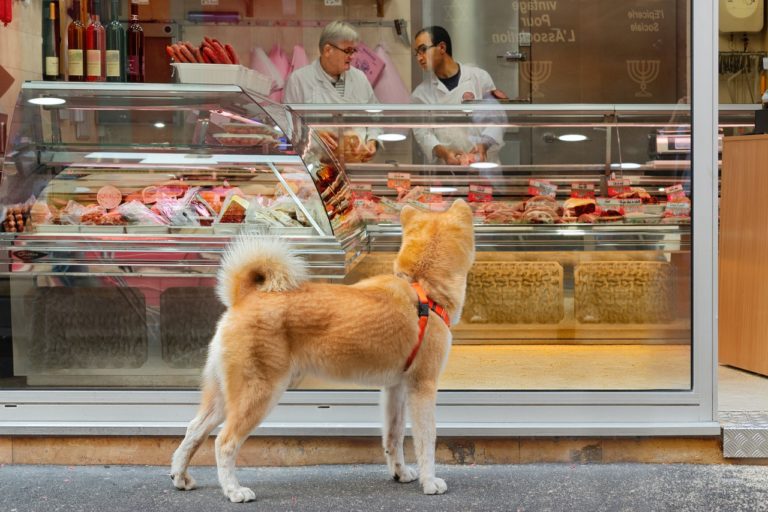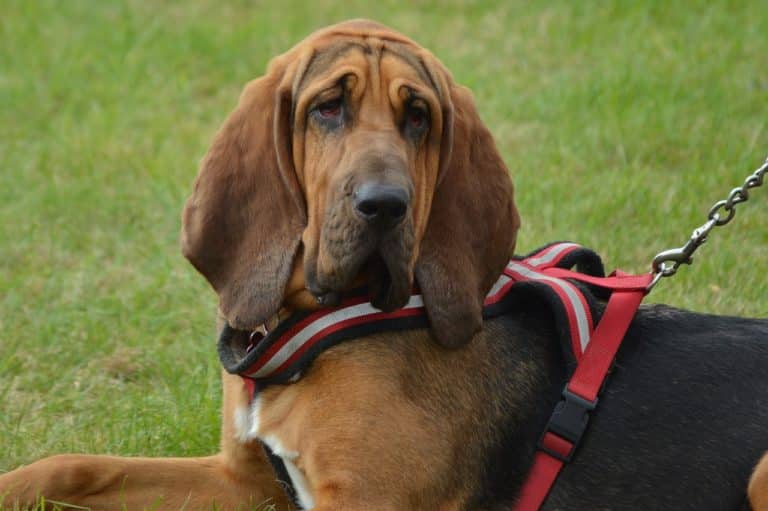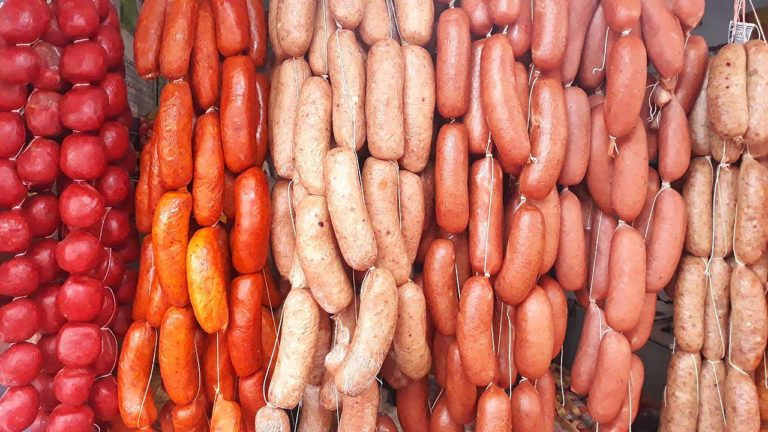Raw bones can be a great treat for your dog, and we know dogs love bones. However, you may have had trouble finding them in the past. Well, we have the answer for you! Below you will find four locations you can get raw dog bones from. We’ll also discuss the benefits, risks and things to look out for when feeding your dog raw bones.
1. From your local pet store
Head down to the food aisle of your local pet store. They may have a refrigerated or freezer section where they sell raw dog foods, meats and even raw dog bones. Since they are a pet store, they will only stock products suitable for pets (such as your dog). And if you’re lucky, it may even include specially sourced, dog-friendly raw bones. If they don’t have any fresh dog bones, then they will almost certainly have dried or roasted dog bones – and other doggy treats. You won’t leave empty handed!
2. From your local butcher
The butcher supplies all things meat! Steaks, sausages and even bones! Beef and pork bones can make great soups, and you can often ask your butcher to bag some up for you. And since these bones are fit for human consumption, you can generally be confident that they are good enough for your pet canine as well. Their supply of raw bones may not always be on display, so make sure to ask your butcher directly!
3. From your local grocery store
Next time you do your home grocery shopping, why not pop into the pet food aisle? If you live near a larger grocery store, the pet food aisle may have its own fridge or freezer section for fresh or raw dog foods and you guessed it – bones too! If not, head down to the normal meats aisle (for humans) to see if there are any soup bones available. Your dog can enjoy these too!
4. From your local farm
If you live near a local farm with livestock, such as a cattle farm, then you may be lucky! Especially if they process and butcher their own animals on site. Purchasing from the farm is likely to be cheaper and fresher than all three options above, as the product does not have to travel as far and be stored for as long to get to you. As always, it’s best to contact your local farm to check – and if they become good friends – then you’ll have the cheapest, freshest supplier of raw bones for your dog!
Benefits of feeding your dog raw bones
Raw bones can contain nutrients such as calcium and phosphorus which are beneficial for dogs. Cartilage around the bone also contains glucosamine which is said to be good for your dog’s joint health.
Clean teeth and gums – the action of gnawing bones also helps to clean dogs’ teeth (almost like a toothbrush!) and massage their gums. Giving your dog raw bones may reduce the risk of plaque and gum disease occurring in your pet.
Raw bones can also bulk up stools for dogs, making it easier for them to pass. This helps to contribute to a healthy dog poop!
Raw bones reduce the risk of splinter and injury compared to cooked bones. Raw bones are softer, spongier and more rubbery compared to cooked bones which are brittle and hard.
Raw bones are a natural treat compared to many other doggy treats which can contain preservatives and chemicals. With raw bones your dog is getting nothing but an unprocessed, raw and natural treat!
Raw bones can be fun for your dog to eat. Dogs love treats, and raw bones are no exception. Having something to chew on will keep your dog occupied and give them something to do. Dogs love to chew so let them chew on a raw bone instead of your shoes, socks or toilet paper!
Risks of feeding your dog raw bones, and how to prevent them
Raw bones can be a choking hazard for your dog. Especially enthusiastic or ‘greedy’ dogs like Labradors, who may be tempted to guzzle and swallow the bones whole. Choosing larger bones that cannot be swallowed whole will reduce this risk. We also recommend supervising your dog while they eat any raw bones.
Contamination from bacteria, such as salmonella. Uncooked foods can cause food poisoning in dogs. We recommend buying raw bones that are fresh, have been handled hygienically and are from trusted suppliers.
Splinters can occur when the bones break apart into little sharp pieces. The splinters can injure your dog’s mouth or its digestive tract when swallowed. This is more likely to occur in cooked bones which become brittle. As such, you should stick to raw bones for your dog which are generally softer and spongier than their cooked counterparts.
Constipation can occur if your dog eats too many bones too quickly. Too much bone in one sitting can end up blocking your dog’s digestive tract – making it hard for them to pass stools. Your dogs should be passing stools between one and five times per day.
Pancreatitis can also occur if too much fatty tissue or bone marrow is consumed by your dog. Inflammation of the pancreas can occur, which is when you need to see a vet ASAP. To avoid this, feed your dog raw bones in moderation, and be aware of how much marrow or fatty tissue is connected to the bones you are giving.




